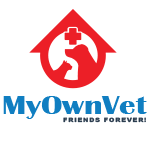Radiography is one of the diagnostic tools used in our clinic
Veterinary diagnostic images includes radiographs (x-rays), ultrasound, MRI and CT scans. They are used as diagnostic tools to collect information about your pet’s health.
Most of the imaging is non-invasive and completely painless. However, some imaging may require sedation or even anaesthesia because your pet must be kept still to allow for adequate images to be produced.
MyOwnVet is equipped with state-of-the-art radiography machines. Our veterinarians will discuss your pet’s case and always conduct a physical examination to determine if a radiography is right for your pet.


















